The Sears & Roebuck Mail Order Catalog was nearly omnipresent in early 20th century American life. By 1908, one-fifth of Americans were subscribers. Anyone anywhere in the country could order a copy for free, look through it, and then have anything their heart desired delivered directly to their doorstep. At its peak, the Sears catalog offered over 100,000 items on 1,400 pages. It weighed four pounds.
Today, those 1,400 pages provide us with a snapshot of American life in the first decade of the 20th century, from sheep-shearing machines and cream separators to telephones and china cabinets. The Sears catalog tells the tale of a world — itemized. And starting in 1908, the company that offered America everything began offering what just might be its most audacious product line ever: houses.
From 1908 to 1940, the Sears Modern Homes Program offered complete mail-order houses to the would-be homeowner — what would come to be called “kit homes.” Customers could select from dozens of different models in Sears Modern Homes Catalog, order blueprints, send in a check, and a few weeks later everything they needed would arrive in a train car, its door secured with a small red wax seal (just like the seal on the back of a letter).
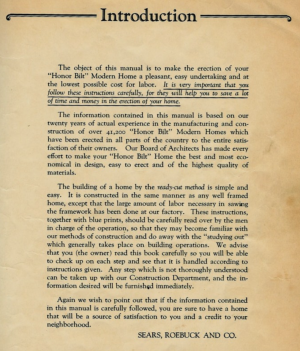 This seal was to be broken on arrival by the new owner, who would open up their boxcar to find over 10,000 pieces of framing lumber, 20,000 cedar shakes, and almost everything else needed to build the home — all the doors, even the doorknobs.
This seal was to be broken on arrival by the new owner, who would open up their boxcar to find over 10,000 pieces of framing lumber, 20,000 cedar shakes, and almost everything else needed to build the home — all the doors, even the doorknobs.
The lumber came pre-cut, kind of like a giant Ikea set, along with an instruction booklet. Sears promised that, working without a carpenter and only rudimentary skills, a person could finish their Sears mail-order home in less than 90 days.
Sears would go on to ship out some 75,000 homes across the country. In so doing, they helped usher out the era of the custom site-built house, replacing it with the promise that homes could be standardized and affordable. Long before the advent of housing developments and the modern suburb, it was the Sears kit home that gave Americans their first taste of 20th-century domestic life. But it’s also a chapter of housing history that was almost lost.
Mailed to Order
Sears was not the first company to offer kit homes or a mail-order catalog, but it came to dominate the mail-order market in part because its founder, Richard Sears, was that kind of expert that so many people would claim to be over the course of the 20th century but very few actually were: he was a marketing genius. For example, according to lore, he intentionally made the Sears Roebuck catalog a little shorter and narrower than the Montgomery Ward one on the theory that it would naturally get stacked on top.
By 1907, Sears and Roebuck were selling the then equivalent of $1.3 billion of merchandise to American families every year. And it’s around this time that Richard Sears saw a way to sell even more.
Most American families at the time were still living in multi-generational housing. The reigning paradigm of the middle class was the Victorian home with all of these different little rooms for different family members. Sears looked at this idyllic scene of families living in harmony and saw … a wasted opportunity. Why should newlyweds move into old homes filled with old things when they could move into new homes and fill them with new things from Sears‽
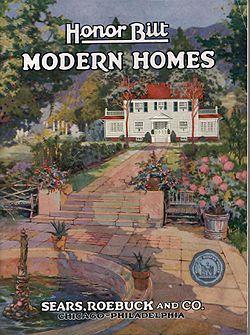 The resulting Sears Modern Home Program was a hit, particularly after the end of World War I, the influx of returning veterans triggered a need for more housing. Sears prefabricated almost all of these homes in giant mills situated across the country.
The resulting Sears Modern Home Program was a hit, particularly after the end of World War I, the influx of returning veterans triggered a need for more housing. Sears prefabricated almost all of these homes in giant mills situated across the country.
Located in Cairo Illinois, the largest of these mills covered nearly 40 acres, and the sheer variety of homes it shipped out was staggering.
Their first Modern Homes catalog already had over 40 models to choose from, but Sears would go on to offer 447 different designs.
Every house in the catalog had a name befitting its architectural aspirations. So if you always dreamed of living in a California mission-style home, but couldn’t actually move to California, you might consider purchasing Sears’ Alhambra model. Other styles included the Vallonia, the Martha Washington and the Crescent. They ranged from modest and cozy cabins to expansive mansions. Sears even offered a six-classroom schoolhouse, complete with an auditorium and library.
Of course, these were just empty houses when they were built, ready to be filled with stuff — ideally, stuff from Sears. The company could sell you everything you needed: the house, the furniture, and all the things to put on the furniture — a whole new life, all from Sears.
Sears offered the promise of convenience at every level. It even had an ad in the front of the catalog showing two Rodessa models — one of Sears’s most popular houses — being built side by side. One was built from scratch, essentially, using ordinary building materials and uncut “stick” lumber. The other utilized precut lumber. The message was clear: it would be much easier to build from Sears’ precut parts.
For many families, these were their first homes with things like insulation and central heating. In some neighborhoods, a Sears kit home might be the only house on a block with electricity.
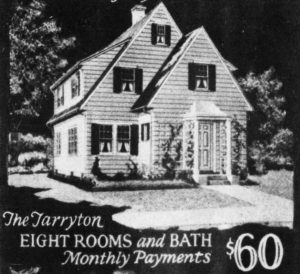 Then, in 1911, Sears began offering mortgages to their customers. Like everything else, they made these easy — maybe too easy. The Sears home mortgage program started out as one of their keys to success. In lowering the barrier to entry, it had allowed Sears to sell far more kit homes far faster than any of its competitors. But when the Great Depression hit, things got ugly fast. The company ended up foreclosing on tens of thousands of its very own customers. It was a public relations disaster.
Then, in 1911, Sears began offering mortgages to their customers. Like everything else, they made these easy — maybe too easy. The Sears home mortgage program started out as one of their keys to success. In lowering the barrier to entry, it had allowed Sears to sell far more kit homes far faster than any of its competitors. But when the Great Depression hit, things got ugly fast. The company ended up foreclosing on tens of thousands of its very own customers. It was a public relations disaster.
After years of declining sales, Sears would finally close its Modern Homes department in 1940. A few other kit home manufacturers — ones that hadn’t sold mortgages — survived, but the Sears kit home boom was over. Then came World War II, and with it, the next modern housing boom, featuring the rise of the suburbs and the prefab home — the kinds of homes we know today.
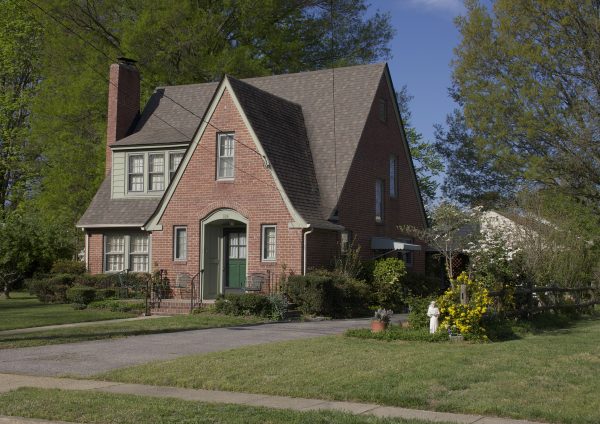
Meanwhile, most existing Sears homes ended up being sold to new owners who didn’t know what they’d bought, or didn’t care to know. Despite the high quality of the materials, over the decades, as the company became associated with convenience over and above quality, no one wanted to admit that they lived in a home that came from the Sears catalog. It was embarrassing. So a lot of them ended up being renovated beyond recognition. Many were torn down. Others were simply abandoned. And the records for those that remained were destroyed, making it hard to locate Sears homes today.
Kit House Hunting
A little over twenty years ago, on a cold winter day in Elgin, Illinois (a bit outside of Chicago), Rebecca Hunter picked up an old Sears catalog and took it on a walk around the neighborhood, wondering if she might find a real-life home matching the house designs in the book. She wasn’t an architecture expert, or a Sears expert. She was just curious.
Elgin wasn’t known for its Sears homes — when Hunter moved into the area, it wasn’t really on her radar, or anyone else’s. When she went out on her trek, she recalls she “wasn’t expecting to find any.” It was just for fun, she says, but, “I had a goal. I had a mission and I forgot about the cold.” Yet within a matter of minutes, she spotted her first Sears home: a craftsman-style Avalon that matched her catalog. As she took more and more walks, she found more and more examples.
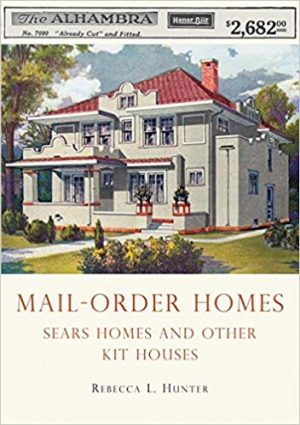
Hunter started taking notes about styles and locations, but she also wanted to verify her finds. So she began reaching out to residents, sending out mailers asking owners to inspect their homes for special beams bearing part numbers from Sears. Some also found shipping labels on the backs of baseboards or original Sears blueprints. So far, she and her fellow kit house hunters have found over 200 in Elgin.
Remarkably, too, most of the Sears homes Hunter found looked like they were straight out of the catalog. They had barely been altered since the 1920s. She was able to find so many not because Elgin had the most Sears homes but because the homes could still be recognized, thanks to a perfect storm of historical conditions.
When the Elgin Watch Factory, which had employed a quarter of the town, closed in 1964, Elgin entered a localized recession, sparing it from the renovation craze of the 1960s and 70s. Instead, Elgin’s Sears homes simply sat there through the decades, largely untouched. The closing of the watch factory froze the town in time.

Hunter’s study of the Elgin homes, along with the work of other researchers, would help to launch fresh interest in historic kit homes, not just there but also around the country. Today, a crew of kit home hunters has self-styled specialists who organize databases, search Google maps, and photograph historic homes. Mostly, though, they hunt for houses the old-fashioned way, by meeting up in groups of two and three and four and cruising slowly down the streets of obscure midwest towns, in a car, together.
These and other house hunters have helped identify nearly 50,000 kit homes from Sears and other companies. So the next time a ragtag team of researchers armed with cameras, laptops and an old Sears catalog knocks on your door asks if they can take a quick tour or your basement, don’t be frightened. They’re there to help. And who knows? You might even be standing in an as yet undiscovered model.
Correction: The Sears, Roebuck & Co. catalog referred to in the episode is Catalog number 117 of The Great Price Maker.
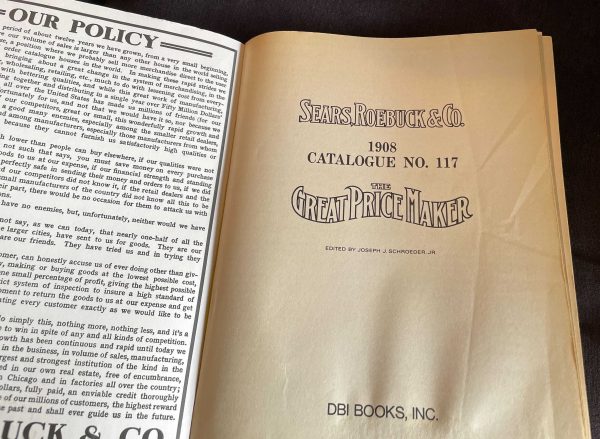
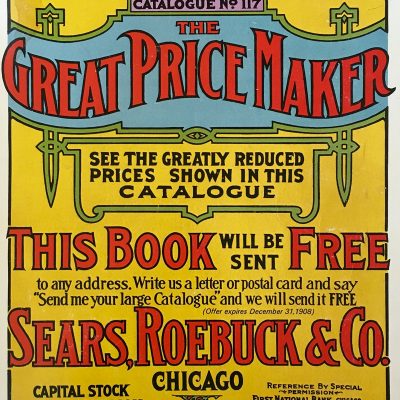
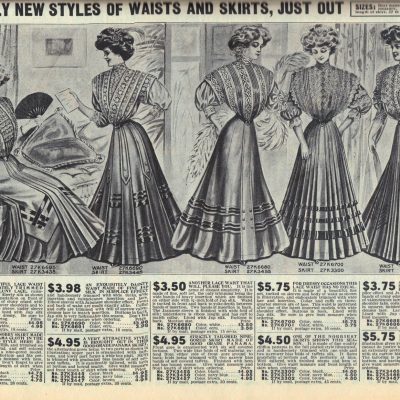
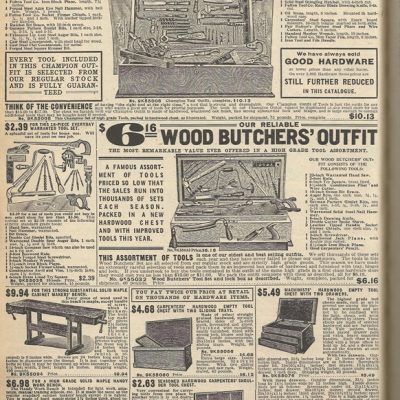
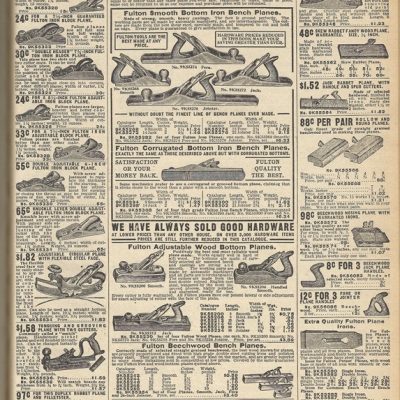
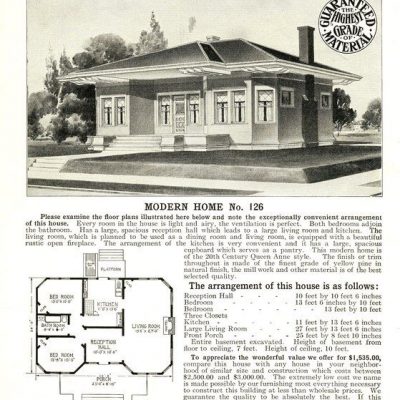
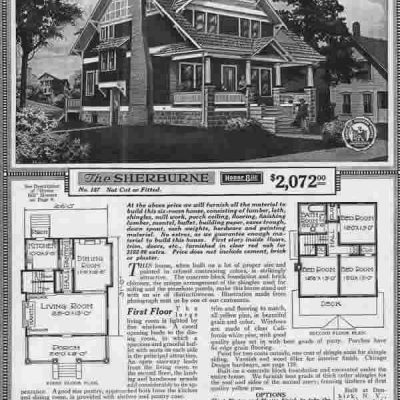

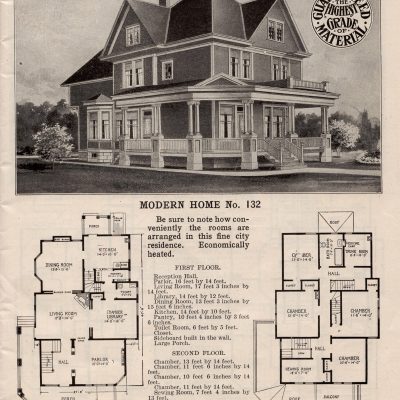
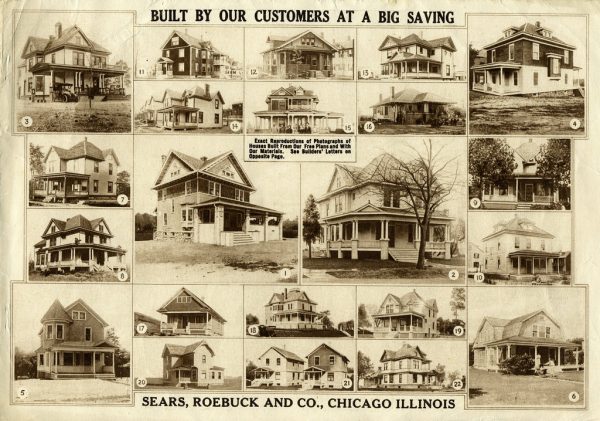



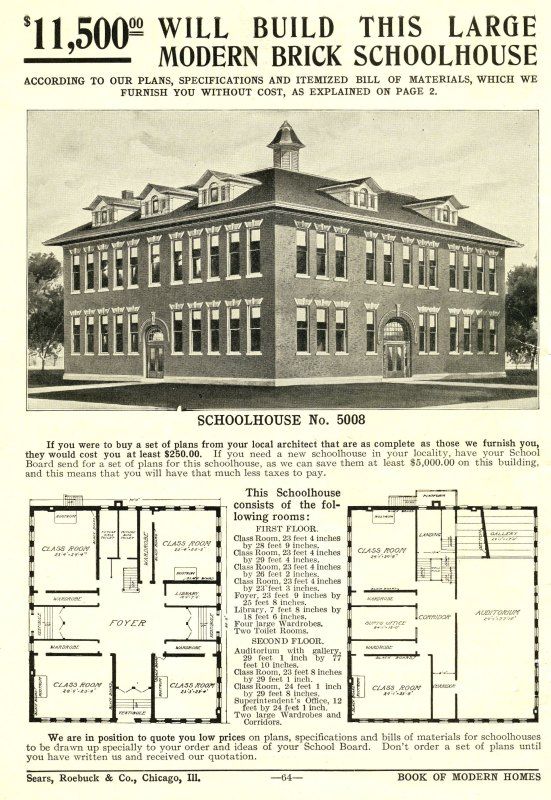
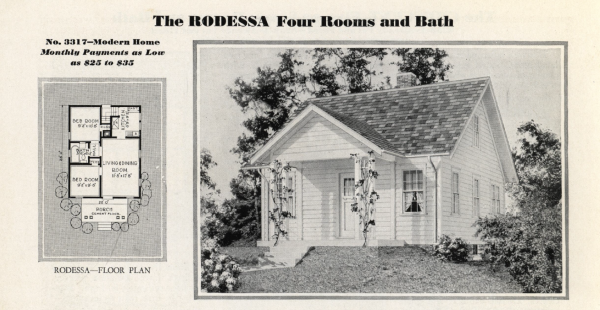
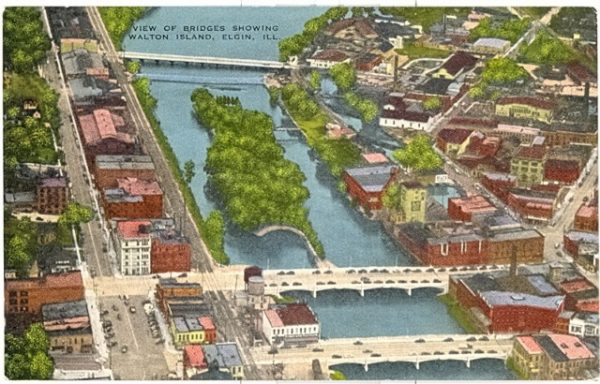
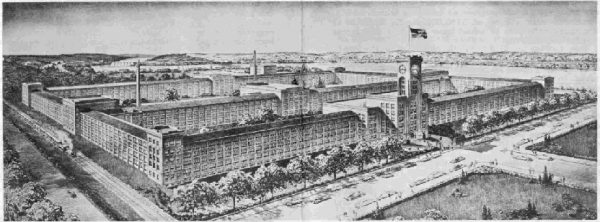



Comments (46)
Share
There are still many Sears Kit Homes in and around the Washington, DC area.
Came to say this as well. A whole neighborhood of Sears homes by the national arboretum.
Interesting epidosde! Use Google street view to find “174 S Douglas St
Powell, Wyoming”–I briefly lived in this town and remember that someone, not the owner (whom I don’t know,), told me that this house “was ordered out of the Sears catalog.” Seems like it could be a Fullerton model if that’s true.
A quilt shop called Las Colchas in San Antonio Texas is a kit house. 110 Ogden St San Antonio, Texas
Love the podcast!
Alejandra Alcántara
You solved a mystery for me! I used to live in a kit Cape in New England. One day a woman was outside my house. I went out with my baby on my hip and asked if i could help her. She asked if she could take a picture of my house. I sais yes, but was too baby tired to think to ask why. I’ve wondered ever since why she wanted a picture of my old tiny house. I think now i know! Thanks!
Great show! I got to tour a Sears home in Bloomington, IN, as part of an annual tour of historic homes in Bloomington. There might have been two, it has been several years since I went on there tour, so I don’t remember the specifics.
The tour still happens every year as part of the Bloomington Restorations Inc. tour of homes: http://bloomingtonrestorations.org/bri-tour-of-homes/
The city of Bloomington also describes a few Sears homes in Bloomington, IN: https://bloomington.in.gov/neighborhoods/historic/mcdoel
Here’s a Sears home friends of mine lived in the 1980s through 2000s. The photos aren’t all of the house, but the ones that don’t look like ‘model homes’ are. What do you think of this 2 bds • 1 ba • 937 sqft home I found on Zillow? https://www.zillow.com/homedetails/3897259_zpid/
Is this kit home database online and is there a URL?
I knew it! Listening to this episode, I remembered taking a tour of the Strathearn Historical Park in Simi Valley, CA and learning that there were many kit homes in the city in the late 19th century. I believed there was at least one of them left and still standing and I was right! I found the article linked below on the Los Angeles Times website. It explains that one home is still standing and privately owned (I’ve driven by it so many times over the years) and another was moved to the Historical Park and can be toured by the public. From what I understand, these homes played a huge role in the creation of this community and the speed with which it was established.
Thanks so much for this episode. Fascinating stuff!
http://articles.latimes.com/2004/aug/19/home/hm-prefabside19
This was a fun episode. Not to ruin the fun for the house hunters but someone from Google might be able to help narrow things down using StreetView data and some machine learning.
I live in the little mountain town of Breckenridge, CO and we have one (that I know of for sure, maybe two) Sears home(s) that are protected as historical sites. Pretty neat to get the story behind them.
Great episode.
My wife and I bought, what we believe, is a Sears catalog home in 2011.
It’s concrete block and is believe to be built from 1908-1910. The previous owners left some information about the house. Great stories and we LOVE this house.
Would love to know about the database and more.
Our google street view is from before we bought the house but if interested:
1622 Middleton Street.
Middleton, WI 53562
great episode. i live close to the repurposed sears building and bike greenway in minneapolis. the sears store was a shame to lose but we applaud its reuse.
I live in a Sears Roebuck kit home in Jerome, Arizona. W.A. Clark bought and built rows of them for his mining executives and connected them with wooden boardwalks. We still have a whole neighborhood of Sears homes on “Company Hill” here.
Thousands of Sears kit homes stand solid today. Amazingly a company Amerisus started selling kit eco homes about ten years ago and now has become the top kit supplier in the nation delivering everything to customers, builders and skilled homeowners, so that a complete home can be built ready for occupancy.
My Grandma, Aunt and Uncle lived at 4618 Indiana Ave. What a wonderful child hood I had living in that house. We all talk about the screened in porch on the back and the summer nights we would all gather and laugh ect. It was a magical neighborhood that still exsists.
During the postscript discussion, I was reminded of a repurposed Sears building I’ve visited before in Atlanta. It’s called Ponce City Market and its a major destination on Atlamts’s “beltway” bike path. Ponce City Market holds a wonderful food court and all sorts of destination stores to shop at. They’re proud of the history and the Market’s website discusses the background of the location.
In Atlanta* my bad on that typo.
Great episode, as usual!
I used to work at the National Foreign Affairs Training Center in Arlington, VA. There are two rickety little cottages on campus that were thought to be Sears kit homes, but I don’t recall if it was ever confirmed. The ADST did a good write-up on the overall construction of NFATC where they’re briefly mentioned.
“In fact, saving the old building turned out to be a major asset to the complex for its usefulness and dignified appearance that evokes an earlier era. There are two white and ugly cottages abutting Route 50 we were also obliged to keep. The Historical Association believed they were Sears Roebuck prefabricated houses dating back to 1929, and therefore of historic interest.”
from https://adst.org/2016/05/the-battle-to-create-the-foreign-service-institute/
Loved this episode. We are distributors for a System Built Home supplier that is using a lot of these concepts. Due to a skilled labor shortage (we build in ski resort communities in Colorado) these panel homes allow for a faster build in severe climates and much of the labor is in a controlled environment, and we get a fixed price on the lumber package. Last year we had a 29% price increase on lumber due to the new tariffs on raw materials.
Since there are multiple versions of each home plan they offer, they still feel like custom homes.
Here is drone video of our exterior walls being set on a rural ranch.
https://www.mountain-loghomes.com/whisper-creek-log-homes
Fantastic episode. Now I am always looking for Sears Homes. This is why I listen to this podcast.
Check how one of these houses was retrofitted to bring it to the current building codes and ready for another 100 years:
https://buildingscience.com/documents/digests/bsd-139-deep-energy-retrofit-of-a-sears-roebuck-house-a-home-for-the-next-100-years
Absolutely loved this episode. Being a resident of Illinois and a lover of architecture Sears homes have intrigued me.
Similar to Elgin, IL you can find a very large still remaining remnant of Sears home in Carlinville, IL. Standard Oil company opened up two coalmines in the the area and meet the housing boom crisis by placing a $1 million dollar order with Sears.
There are several websites which document this history, you check them out!
http://www.carlinville.com/sears-homes/
http://www.route66university.com/study/essay_thorn_std.php
http://interactive.tegna-media.com/video/embed/embed.html?id=2581158&type=video&title=The%20Carlinville%20neighborhood%20that%20Sears%20built&site=63&playerid=6918249996581&dfpid=32805352&dfpposition=Video_prestream_external%C2%A7ion=home
Enjoy!!!
Great episode, but I was surprised you didn’t mention Buster Keaton’s “One Week” as a humorous take on a homemade home.
Another great episode! I used to live in Pennsylvania and would frequently drive past a cute home that had a small “Sears House” sign in the front yard. The show encourage me to look for it n Google Maps. It’s at 103 Bondsville Rd, Downingtown, PA and you can see it on Google Street View. It appears to be a Sherburne model and looks fairly original.
Pittsburgh has quite a few of them left. There’s streets and streets of them here.
Oh hey great those Flickr photos are my mom’s!
CHECK OUT : http://www.dialogdesign.ca/open-dialog/rebuild-dreams-dialog/
A recent reuse of a Sears building in Memphis similar to the Minneapolis discussion at the end, but community wellbeing driven and very mixed use.
Is their database online? It’d be great to add to it.
Unfortunately, I tried searching but can’t get any info on it
ON the Chapter 11 filing of Sears there was a note in the third paragraph of the mail order home (https://nyti.ms/2QMpeki) as “tourist curiosities”
I believe the elementary school I attended was a Sears school. Alice Elementsry in Hibbing Mn. Sadly, it’s no longer there
Great episode and a fascinating glimpse into early 20th century industrialism/consumerism.
I do wish they had talked at least a little about George Barber homes, which predated the Sears mail order house business. Barber homes were just mail order plans, not kits; but he was one of the first architects to take advantage of the mail order catalog phenomenon in the 1890’s. By the time he stopped publication of his catalogs in 1918, he had sold over 20,000 plans. Many Barber homes still stand today.
From the Lehigh Valley – home of the Allentown Billboard Boys – a wild news article appears: http:// http://www.mcall.com/business/realestate/mc-biz-mail-order-homes-20181120-story.html
If you’re interested in hearing more about these beautiful homes, you should reach out to Rosemary Thornton -she has a blog and FB page entitled “Sears Kit Homes”…she is an expert on these homes and would make for a great podcast.
For those interested in how this phenomenon played out in Canada: https://www.historymuseum.ca/cmc/exhibitions/cpm/catalog/cat2104e.html. Only here it was Eaton and the Canadian Aladdin company (branch of the American one) that sold them, but did so around the same time since Sears hadn’t broken into the Cdn market yet
When I bought my first home in Hyde Park NY in 2004, we were told by they previous owners that it had be built in the 40s and was a Sears kit house.
https://www.zillow.com/homedetails/559-Creek-Rd-Poughkeepsie-NY-12601/150837701_zpid/
The last Sears Modern Homes catalog was issued in 1940. There were Sears offices still open in 1941 and 42, and still sold kits through those offices, some models not seen in the last catalogs, only available through those local offices. For more information, see this blog post
http://www.sears-homes.com/2012/11/yes-virginia-sears-homes-were-built.html?m=1
There was a brief expansion of Sears into Home Clubs, in the northeast, but the expansion didn’t last long, and didn’t go far, except in limited neighborhoods, in Sidney, NY, Cranford, NJ, North Plainfield, NJ, Briarcliff Manor, NY, Grandyle Village, NY, North Tonawanda, NY, and Elyria, OH. Some areas didn’t sign up enough people, and were never built by Sears. In any case, none of those areas were built by the homeowners, only by contractors who were contracted by Sears to do the building.
For a short time, in the early 50s, Sears did an actual prefab homes – not kits – program. They were called Homart Homes. They were true prefabs, built from preassembled panels, and other materials. There is a story about them, from a Sears Homes blogger, at
http://www.sears-homes.com/2017/11/a-happy-ending-for-1950s-sears-house.html?m=1
It’s definitely gotten much less publicity than the original Sears Modern Homes program, but is just as legitimate a Sears home, as the others.
I am currently half way through my re-listening (second time) of all 99% invisible episodes :) love em. Thanks Roman. Anyway, I first listened to the Sears mail-order homes over 2 years ago. So, I now have come accross this link and was reminded: https://www.nbc4i.com/news/u-s-world/house-ordered-from-sears-catalog-in-1920s-still-standing/?fbclid=IwAR0L7hrMy95EeV5x-BoKYXbQyshuyDb23qLjfQ0H0x_dvdbKnUA0naHdrtM
By the way, my favorite 2 episode is “the purple brick hotel” and the round tower in south africa.
Thank you for filling my driving time in the best way possible.
When I was doing work for the 1990 census I had many homeowners proudly tell me that their home was a Sears catalog home. In West Milton, PA.
There were also mail-order jails. The cells and the set-up to lock and unlock them, came in kit form. The community built a brick shell around them. One still stands in Newport, Vermont, although it is no longer used, thank goodness. The former sheriff gave me a tour and it didn’t seem like a place I would like to be incarcerated. Still, the word is the last sheriff to operate the jail served food cooked by his wife that was good enough to make a stay almost worthwhile. The paper I write for ran my article about the place and another piece, written by a colleague about the area’s remaining mail-order homes.
I enjoyed the episode and the comment about there being a schoolhouse got me thinking about this book – A Better Life for Their Children
Julius Rosenwald, Booker T. Washington, and the 4,978 Schools That Changed America by Andrew Feiler, Foreword by John Lewis
If there isn’t already an episode on it, it would move this bit of nostalgia into a more “change the world” mode. Thanks
https://ugapress.org/book/9780820358413/a-better-life-for-their-children/
As far as reusing Sears buildings, a former Sears store housed the San Diego Central Public Library until 2013.
Still the same great podcast. Kinda strange to have Audi and Dunkin Commercials.
I miss the ads for Squarespace, the real real, article and slack.
Sears homes are well known; has anyone heard of Amit home named “O’Malley’s Easy Do”? I owned a place built in 1977 in the quaint Arizona town of Strawberry. My neighbor then who had built his in 1975 from the same kit and told me the name.
Ironically I moved to central Canada and happened to but a 1917 Eaton home, I cant avoid the kit homes.
Loved the episode, especially that clever bit of sizing the Sears catalog a tad mallee than the Montgomery Ward one.
I frikkin LOVE this podcast. I’ve read the book twice since I got it for Christmas last year. There’s a Sears house 2 blocks from my house here in Salisbury NC and I drive by it several times a week just to look at it. Thanks for this episode and all the rest and please keep them coming.